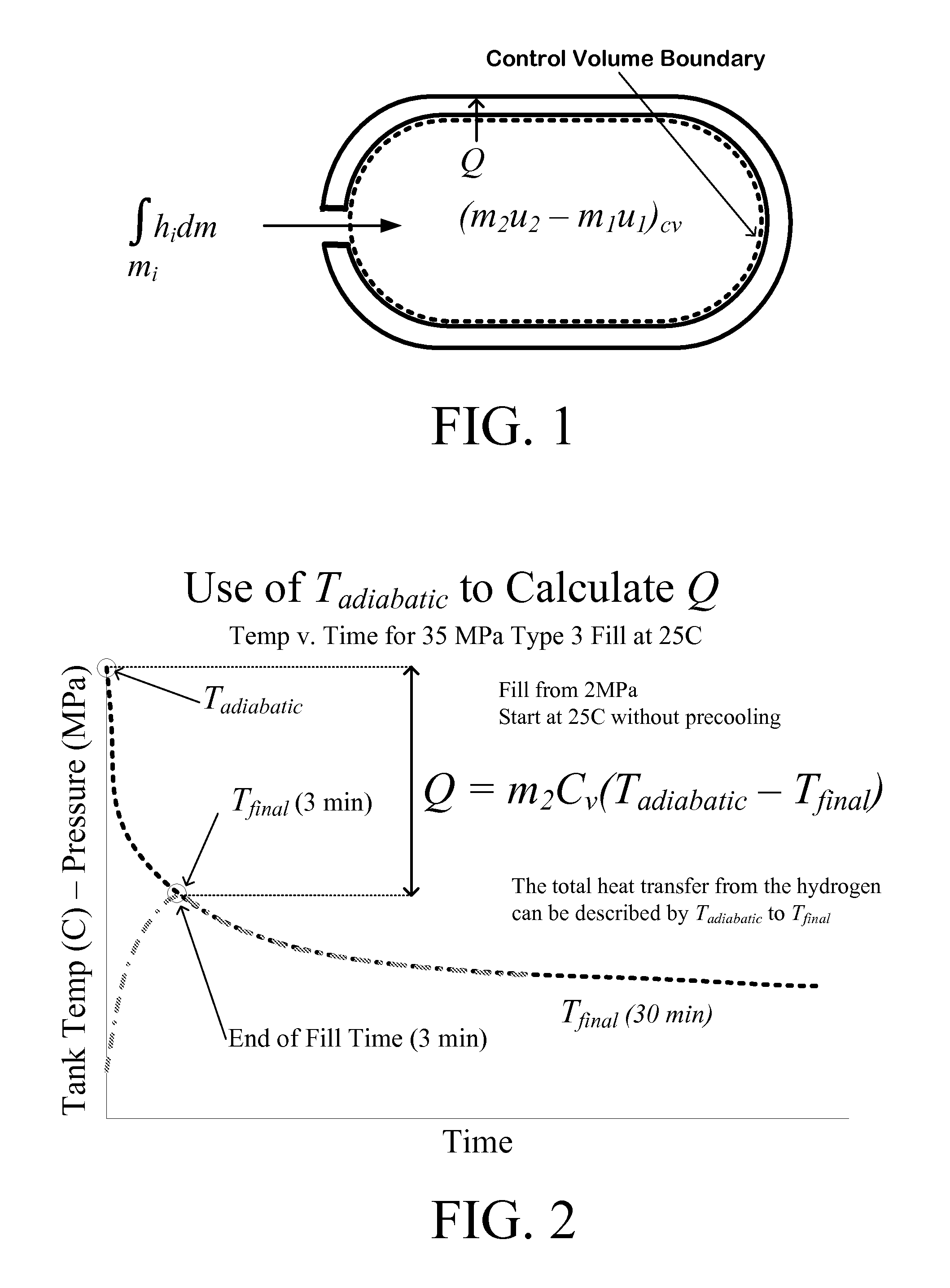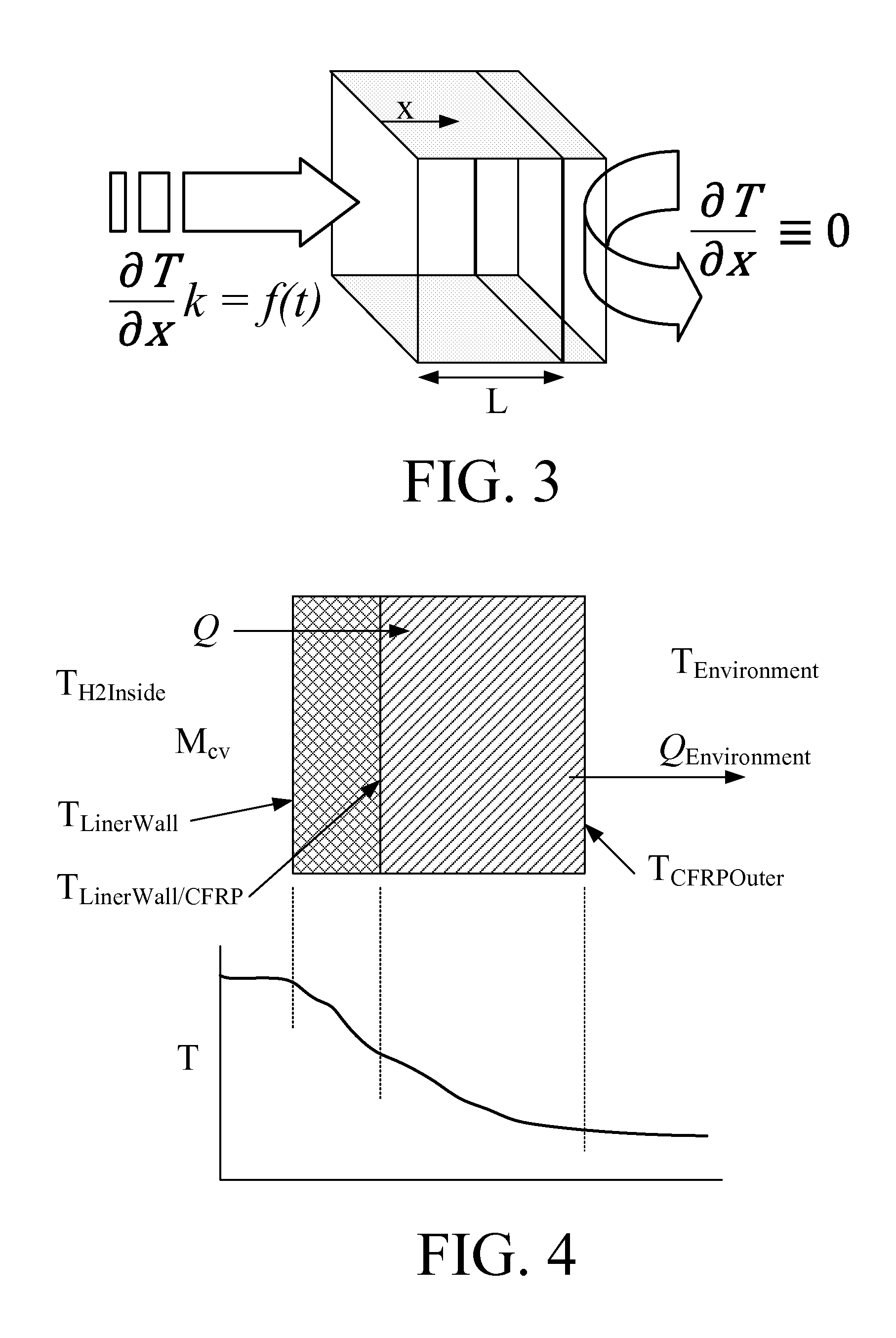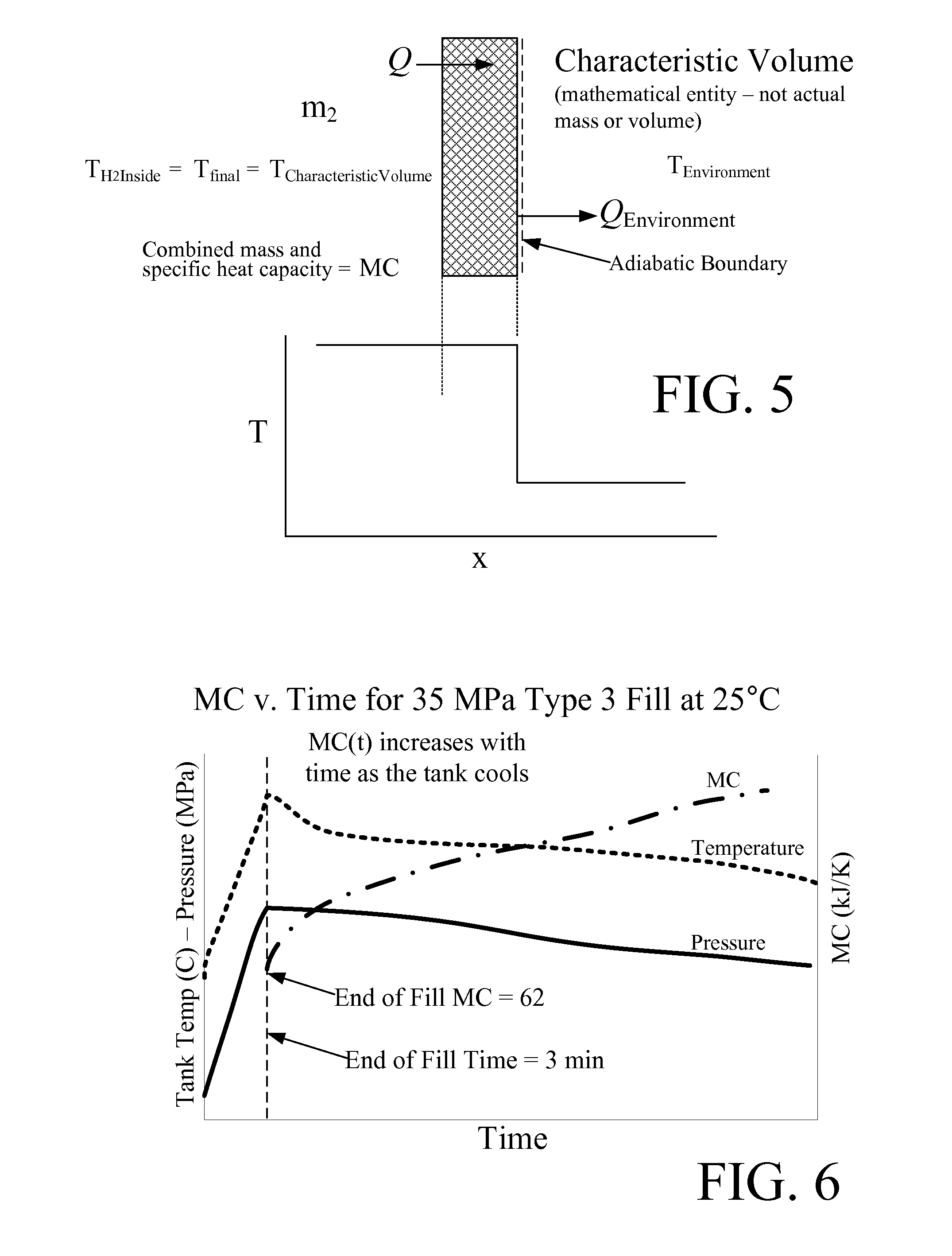Method and System for Tank Refilling
a tank and tank technology, applied in the direction of container filling under pressure, liquid handling, transportation and packaging, etc., can solve the problems of reducing the final fill pressure, reducing the efficiency of hydrogen tank filling, and even more conservative parametric assumptions, so as to improve the performance of hydrogen filling stations, enhance fueling performance, and improve fill speed and fill quality.
- Summary
- Abstract
- Description
- Claims
- Application Information
AI Technical Summary
Benefits of technology
Problems solved by technology
Method used
Image
Examples
Embodiment Construction
[0034]The goal of the methods and systems detailed in this disclosure is to provide an improved hydrogen filling model and system utilizing an appropriate algorithm that can be utilized in any gas tank filling operation for improving the accuracy in predicting the end-of-fill temperature and pressure conditions for a range of hydrogen tanks across a wide range of operating conditions. Implementation of the methods and systems detailed below during hydrogen tank refueling events can improve the efficiency, accuracy and / or safety of the refueling operation by reducing the chance of overfilling and / or overheating a hydrogen tank.
[0035]Accurately estimating the end-of-fill temperature achieved by a refueling operation can be difficult, which is why communication refueling has been developed. Such systems rely on temperature and pressure information that is transmitted directly to the hydrogen tank filling station through one or more communication device(s) including, for example, the In...
PUM
 Login to View More
Login to View More Abstract
Description
Claims
Application Information
 Login to View More
Login to View More - R&D
- Intellectual Property
- Life Sciences
- Materials
- Tech Scout
- Unparalleled Data Quality
- Higher Quality Content
- 60% Fewer Hallucinations
Browse by: Latest US Patents, China's latest patents, Technical Efficacy Thesaurus, Application Domain, Technology Topic, Popular Technical Reports.
© 2025 PatSnap. All rights reserved.Legal|Privacy policy|Modern Slavery Act Transparency Statement|Sitemap|About US| Contact US: help@patsnap.com



